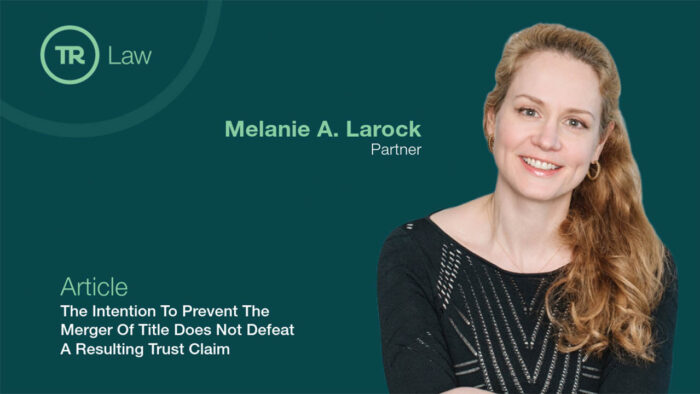Definitions for Pediatric Catastrophic Impairment
Author(s): David A. Payne
September 5, 2013

Since October 1, 2003 with the enactment of Ontario Regulation 281/03, the catastrophic determination for children under the age of 16 has been subject to special considerations. The issue is what are those special considerations and how do we apply them to an infant’s catastrophic assessment?
For a finding of catastrophic impairment arising from injuries suffered in a motor vehicle accident in Ontario, and the enhanced accident benefits that flow from such a finding, the definition is as follows:
- for the purposes of this Regulation, a catastrophic impairment caused by an accident is,
- paraplegia or quadriplegia;
- the amputation of an arm or leg or another impairment causing the total and permanent loss of use of an arm or leg;
- the total loss of vision in both eyes;
- subject to subsection (4), brain impairment that results in,
- a score of 9 or less on the Glasgow Coma Scale, as published in Jennett, B. and Teasdale, G., Management of Head Injuries, Contemporary Neurology Series, Volume 20, F.A. Davis Company, Philadelphia, 1981, according to a test administered within a reasonable period of time after the accident by a person trained for that purpose, or
- a score of 2 (vegetative) or 3 (severe disability) on the Glasgow Outcome Scale, as published in Jennet, B. and Bond, M., Assessment of Outcome After Severe Brain Damage, Lancet i:480, 1975, according to a test administered more than six months after the accident by a person trained for that purpose;
- subject to subsections (4), (5) and (6), an impairment or combination of impairments that, in accordance with the American Medical Association’s Guides to the Evaluation of Permanent Impairment, 4th edition, 1993, results in 55 per cent or more impairment of the whole person; or
- subject to subsection (4), (5) and (6), an impairment that, in accordance with the American Medical Association’s Guides to the Evaluation of Permanent Impairment, 4th edition, 1993, results in a class 4 impairment (marked impairment) or class 5 impairment (extreme impairment) due to mental or behavioral disorder.
The special considerations for the catastrophic assessment of children injured in a motor vehicle accident are set out in section 2(3) and 2(4) of the SABS which provide:
- Subsection (4) applies if an insured person is under the age of 16 years at the time of the accident and none of the Glasgow Coma Scale, the Glasgow Outcome Scale or the American Medical Association’s Guides to the Evaluation of Permanent Impairment, 4th edition, 1993, referred to in clause (2) (d), (e) or (f) can be applied by reason of the age of the insured person.
- For the purpose of clauses (2) (d), (e) and (f), an impairment sustained in an accident by an insured person described in subsection (3) that can reasonably be believed to be a catastrophic impairment should be deemed to be the impairment that is most analogous to the impairment referred to in clause (2) (d), (e) or (f), after taking into consideration the developmental implications of the impairment.
Subsections (3) and (4) were enacted as a result of a submission to the government contained in a report from the advisory panel on catastrophic impairment submitted in September 2000. Recognition of the hard work done by that panel to accomplish this amendment should be acknowledged. They were: Dr. Peter Rumney, Dr. Robert D. Gates, Philippa G. Samworth, Stephen Whitelaw, Dr. Faith Kaplan, Steven Firestone and Dr. Harold Becker.
The necessity for this amendment was the inherent difficulty in using the Guides to the Evaluation of Permanent Impairment, which were designed to assess adults not children. For example:
- How would you assess a 6 year old’s ability in the workplace? It is an unintelligible concept.
- A 4 year old may have relatively minor assessment ratings from a brain injury which will evolve as the child ages into a very serious brain injury with catastrophic consequences.
Section 2(4) requires the assessor do the following:
- They must assess all impairments of the child;
- They must assess all impairments that are the most analogous to the impairments referred to in clauses:2(d) (Glasgow Coma Rating and Glasgow Coma Outcome Scale);
2(e) (55% Whole Person Impairment); and
2(f) (a class 4 marked impairment)taking into consideration the developmental implications of the impairment.
An example of this would be where a 6 year old brain injured child is fully capable of completing kindergarten successfully, but would likely not complete high school or be employable. The assessor must take into account the developmental implications of the impairment and rate them on what their future impairments, assessed pursuant to the Guides, would be.
While the above noted examples may indicate the obvious necessity for such a test, it should be noted there is a threshold in order to take into consideration the developmental implications of the impairment.
The Threshold
Section 2(3) provides that, taking into consideration the developmental implications of the impairment as set out in section 2(4) for individuals under the age 16, can only be applied “if an insured person is under the age of 16 at the time of the accident, and none of the Glasgow Coma Scale, Glasgow Coma Outcome Scale or the American Medical Association’s Guides to the Evaluation of Permanent Impairment, Fourth Edition 1993, can be applied by reason of the age of the insured person.
If for example, an individual is about to turn 16 at the time of the assessment, the assessor should set out reasons why the age of the insured person prevents the Glasgow Coma Scale, Glasgow Coma Outcome Scale, 55% Whole Personal Impairment, or a Chapter 14 marked impairment, as set out in the Guides, from being applied by reason of the person’s age
That Can Reasonably be Believed
Section 2(4) provides that for an infant’s impairment “that can reasonably be believed to be a catastrophic impairment”, it should be deemed to be one of the catastrophic impairments that is most analogous to a Glasgow Coma Scale of 9 or less, a WPI of 55% or more or a Chapter 14 marked impairment catastrophic designation after taking into account, developmental implications.
Does the phrase “reasonably be believed to be” make the assessment for a person under 16 an easier catastrophic designation than for an adult? It would appear so.
For example, Section 2(e) of the Guides applicable to adults speaks only of impairments “in accordance with the Guides” that result in a 55% WPI or more. It looks and searches for precision and certainty in the calculation. It never suggests or uses language such as “reasonably be believed to be”.
In other words, if an arbitrator is deciding if a child’s multidisciplinary catastrophic assessment and declaration of catastrophic status is valid, the arbitrator may not simply be able to calculate and determine his own conclusions, but be required to go further and decide if the insured’s catastrophic assessment team’s conclusion was determined with a reasonable belief of the child being catastrophic, and if so, then uphold their conclusion.
Judicial and Arbitral Decisions and Interpretations of these Sections
It is now almost eight years since children have had their own specific catastrophic criteria as set out in sections 2(3) and 2(4) of the Statutory Accident Benefits Schedule. In that time, the following has occurred:
- The Financial Services Commission has issued no guidelines or policy directives on the procedure and protocol to be used in catastrophic assessments of individuals under the age of 16.
- The Superintendent of Insurance has provided no guidelines or policy directives on the procedure and protocol to be used in catastrophic assessments of individuals under the age of 16.
- There have been no decisions from the Ontario courts on the procedure and protocol to be used in catastrophic assessments of individuals under the age of 16.
- There have been no Arbitration decisions from the Financial Services Commission on the procedure and protocol to be used in catastrophic assessments of individuals under the age of 16.
What is the Appropriate Point in Time for the Assessment if there is a Dispute?
One can well imagine an assessment team performing a catastrophic assessment and providing an opinion at the time of the assessment having regard to the future developmental implications.
The insurer then takes eight or nine months to complete its assessments taking into account, future developmental impairments and determining that the infant is not catastrophic. Two years later, an Arbitrator has to make a decision as to whether or not the infant is catastrophic. Does the Arbitrator make that decision at the time of the hearing having regard to future developmental implications or back when the insured’s catastrophic assessment team assessed the infant? Conceivably it could be when the insurer did the assessment. What if the child is no longer under 16 at the time of the arbitration?
What is the Burden of Proof?
Assessors will have to reasonably foresee the future impairments for a child. When these determinations are challenged by the insurer, is the burden of proof on predicting the infant’s future to be on the typical “balance of probabilities” or the lesser test we see in a civil case for assessing infant’s future damages of simply showing a “substantial likelihood”? None of this is known due to the lack of any interpretation whatsoever to date. The most prudent course would be to make the assessments of future impairments on the basis of the balance of probability.
How is the Actual Assessment Completed?
Let’s take a few examples:
Example 1:
Imagine a child suffering a severe brain injury who is at the preverbal stage. The Glasgow Coma Scale is based upon an inability to make a verbal response and obviously, completely inappropriate for determining the catastrophic impairment in a non-verbal child. In this instance, if the assessor determines that the developmental implications of the injury are such that a Glasgow Coma Scale of 9 or less should be applied, than the assessor just simply declares that and makes the finding of assigning a Glasgow Coma Scale of 9 or less and the accompanying catastrophic designation.
Example 2:
Another example would be a 10 year old child who has a Glasgow Coma Scale reading of 12. Research indicates that children that suffer very serious brain injuries do not have the same difficulty responding to the verbal stimulation Glasgow Coma Scale test as an adult does. In other words, a child could very well have a very serious brain injury but a Glasgow Coma Scale reading of 12.
In this example, if the assessor determines that developmental implications of the injury are such that the Glasgow Coma Scale of 9 or less should be applied, then the assessor simply applies it and makes a finding of catastrophic impairment on that basis.
Example 3:
Another example would be where a child suffers very serious orthopedic injuries as a teenager.
A teenager’s growth plates have not yet finished growing and it is very foreseeable that with his injuries, that when he does finish growing he will be seriously and permanently disabled. If the assessor if of the view that the impairments are such that taking into effect the developmental implications of the orthopedic injury is such that the child is catastrophically impaired, the assessor would simply state that the child has a greater than 55% WPI.
Example 4:
Imagine a 14 year old child who has developed a serious mental and behavioral disorder as a result of a motor vehicle accident. The assessor will want to apply Chapter 14 and determine whether or not the infant has a class 4 (marked impairment) or class 5 (extreme impairment). To refresh, a class 4 marked impairment is defined as “impairment levels significantly impede useful functioning”. A class 5 extreme impairment is defined as “impairment levels preclude useful functioning”.
This impairment level test is applied to four domains or aspects of functioning described in Chapter 14 as:
- Activities of Daily Living
- Social Functioning
- Concentration, Persistence and Pace
- Adaptation, Deteriorization, or Decompensation in work or work-like setting
The assessor taking into account the developmental implications of the mental and behavioral disorder can extrapolate and apply them to these four domains.
If the assessor is of the view that the mental and behavioral disorder is such that the child has a marked impairment, the assessor would simply state this and complete the OCF-19.
The Future
On April 16, 2012, the Provincial Legislature created a select standing committee to study and report on the current definition of catastrophic impairment. The recommendation of this committee is likely to result in amendments to the definition of pediatric catastrophic impairment.
View PDF version: ABR Updater | Issue 14 | September 2013
Share this








